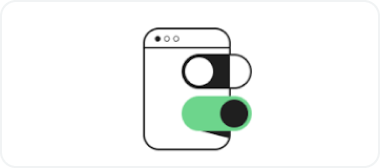Page Summary
-
Google Authorization and OAuth enable secure integration of Google services into applications, providing access to tools like Google Drive, Gmail, and YouTube.
-
Using Google Authorization streamlines user connections and leverages OAuth 2.0 for secure, controlled access to personal data and services.
-
Google Authorization simplifies authentication and authorization workflows, freeing developers to focus on building features and offering advantages like unified API access, effortless security compliance, fine-grained permissions, and cross-platform support.
-
Google Authorization operates on the OAuth 2.0 protocol, allowing apps to authenticate users, access Google services, and enable scalable integrations by requesting user consent for specific scopes.
Google Authorization and OAuth enable developers to securely integrate Google services into their applications, allowing seamless access to powerful tools like Google Drive, Gmail, YouTube, and more. This page offers an overview of the value Google Authorization brings to your application, whether you're a product manager seeking to enhance user experiences or a developer building robust, feature-rich integrations.
Why Use Google Authorization?
Google Authorization streamlines the way users connect with your application, offering them the ability to securely authenticate and authorize using their Google Accounts. By leveraging OAuth 2.0, Google ensures a secure, user-friendly system for granting applications controlled access to personal data and services.
Imagine enabling users to upload files directly to their Google Drive, schedule events in their Calendar, or integrate their Gmail into your app—all without needing to create a separate account or compromise security. Google Authorization makes this possible, delivering immense value to both your users and your product.
Unlocking Opportunities for Developers
Google Authorization simplifies complex authentication and authorization workflows, freeing developers to focus on building innovative features. Some key advantages include:

Unified Access to Google APIs
Whether it's managing Drive files, sending Gmail notifications, or analyzing YouTube content, developers can seamlessly integrate Google services.
Effortless Security Compliance
OAuth 2.0 offloads the responsibility of user authentication and authorization, minimizing risk and reducing development overhead.
Fine-Grained Permissions
OAuth scopes enable apps to request only the data they need, ensuring privacy and earning user trust.
Cross-Platform Support
Google Authorization works consistently across web, mobile, and desktop environments, allowing developers to build flexible solutions for diverse user needs.How It Works
Google Authorization operates on the OAuth 2.0 protocol, a widely-adopted authorization framework that allows third-party applications to request and gain secure access to resources on behalf of a user. With Google's implementation of OAuth 2.0, developers can:
login
Authenticate Users
Allows users to sign up and sign in to apps and sites
with Sign in with Google, enhancing user experience and convenience.

Grant controlled access data from Google apps like
Gmail, Google Drive, Calendar, and YouTube.
layers
Enable Scalable Integrations
Support diverse application types, including
web servers, client-side applications, mobile apps, and devices with limited
input.
By requesting user consent for specific "scopes," your app can gain limited access to user data or services while maintaining their privacy and security.
For example, a photo editing app could request permission to save edited images directly to a user's Google Drive, ensuring a smooth and integrated workflow. Meanwhile, the user retains control, with the ability to review or revoke permissions at any time.
For Developers
conversion_path
Simplified Authorization
Use ready-made libraries to implement OAuth 2.0
efficiently, saving development time and reducing errors.
folder_managed
Incremental Access Control
Request permissions dynamically as needed,
improving user experience and maintaining privacy.
devices
Cross-Platform Support
Implement OAuth 2.0 seamlessly across various
platforms and application types.
Explore What's possible
Google Authorization and OAuth are more than just technical solutions—they're the foundation for creating powerful, user-centered applications. Whether you're building a simple tool or a complex system, this platform unlocks opportunities to deliver secure, engaging, and innovative features that users will love.
Ready to dive deeper? Explore the resources available and start shaping the future of your application today.
| Android | Implementation guide for Android |
| Web | Implementation guide for Web |
| iOS | Implementation guide for iOS |